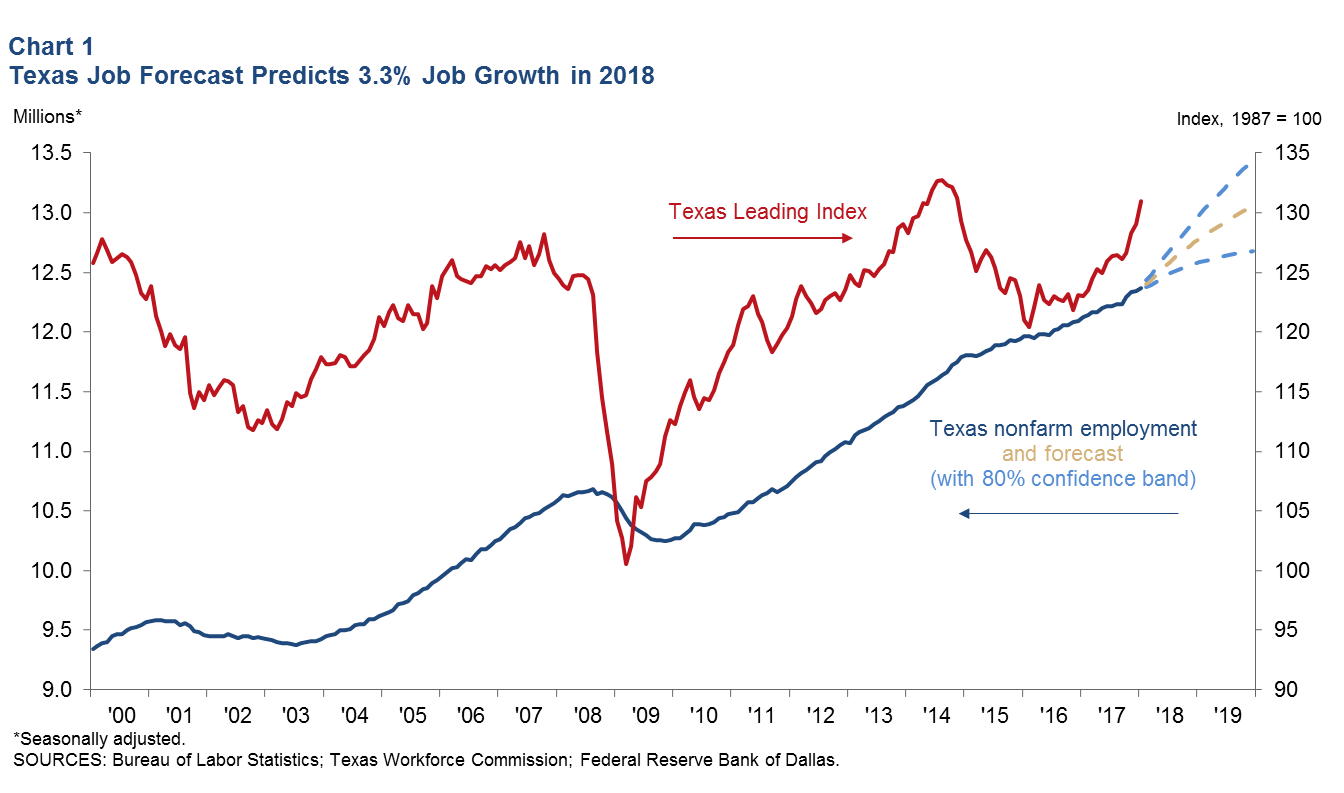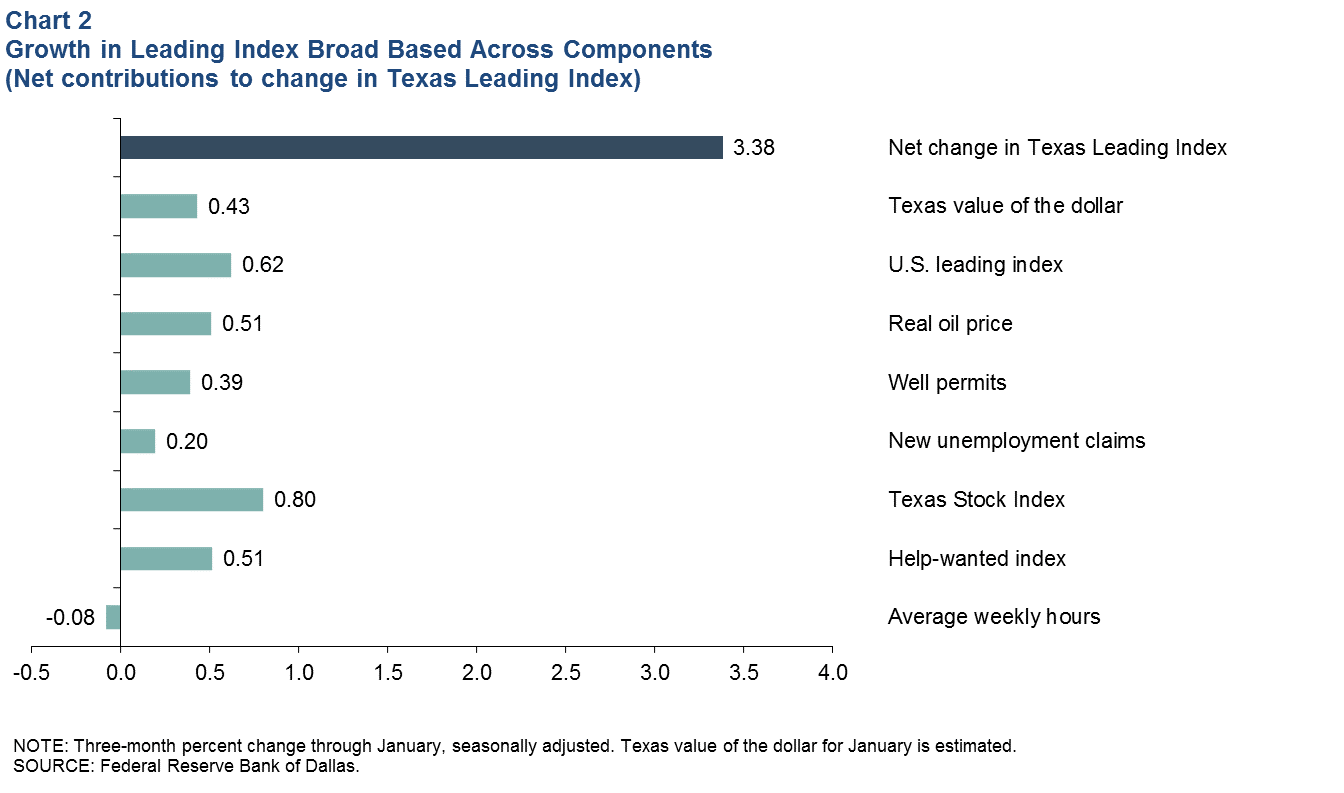Texas Employment Forecast

Incorporating January employment growth of 2.5 percent and leading index data, the Texas Employment Forecast suggests jobs will grow 3.3 percent this year (December/December), with an 80 percent confidence band of 1.8 to 4.8 percent. This is up from the previous estimate of 2.8 percent. Based on the forecast, 407,900 jobs will be added in the state this year, and employment in December 2018 will be 12.8 million (Chart 1).
“January growth, along with the continued rise in the Texas Leading Index, suggests a good start to 2018,” said Keith R. Phillips, Dallas Fed assistant vice president and senior economist. “Job growth is positive and broad based across most major industries. The oil and gas industry in particular continued to pick up after weakness in 2015 and 2016 and the beginnings of a recovery in 2017.”
The Bureau of Labor Statistics implemented its annual benchmark revision to Texas, revising growth in 2017 to 2.1 percent.
Recent gains in the Dallas Fed’s Texas Leading Index suggest that job growth in the state will accelerate this year. The index increased strongly over the three months ending in January, rising 3.38 percent (Chart 2). All of the components increased with the exception of average weekly hours worked in manufacturing, which slipped slightly. The largest contributions to the rise in the index came from the Texas Stock Index, the U.S. leading index, the Texas help-wanted index and oil prices. The Texas value of the dollar, drilling well permits and initial claims for unemployment insurance all gave moderately positive contributions.


Next release: March 23, 2018
Methodology
The Dallas Fed Texas Employment Forecast projects job growth for the calendar year and is estimated as the 12-month change in payroll employment from December to December. The forecast reported above is a point estimate with 80 percent confidence bands; in other words, the true forecast lies within the bands on Chart 1 with 80 percent probability.
The Dallas Fed Texas Employment Forecasting Model is based on a transfer function that utilizes past changes in state employment along with past changes in the Dallas Fed Texas Leading Index (TLI). Changes in the TLI have an impact on employment with a lead time of three months, and the effect dies out slowly over time. The regression coefficients on lagged changes in employment and the TLI are highly statistically significant, and the model as a whole has been accurate relative to other forecasters over the past two decades.
The forecasting model has been in use at the Dallas Fed since the early 1990s, and the employment forecast has been published in the Western Blue Chip Economic Forecast (WBCF) since 1994. Phillips and Lopez (2009) show that the model has been the most accurate in forecasting Texas job growth relative to other forecasters in the WBCF. In particular, the model had the lowest root mean squared error and has been the closest to the actual the most times (nine of the last 17 years) out of five forecasters that have consistently participated in the survey.
For more details about the model and its performance, see “An Evaluation of Real-Time Forecasting Performance Across 10 Western U.S. States,” by Keith R. Phillips and Joaquin Lopez, Journal of Economic and Social Measurement, vol. 34, no. 2–3, December 2009.
Contact Information
For more information about the Texas Employment Forecast, contact Keith Phillips at keith.r.phillips@dal.frb.org.